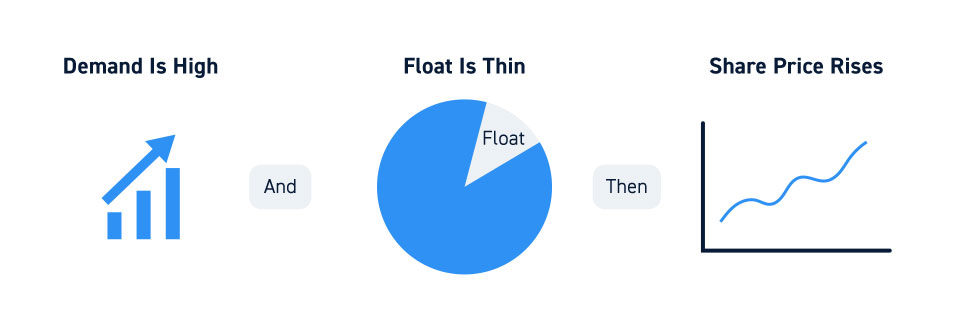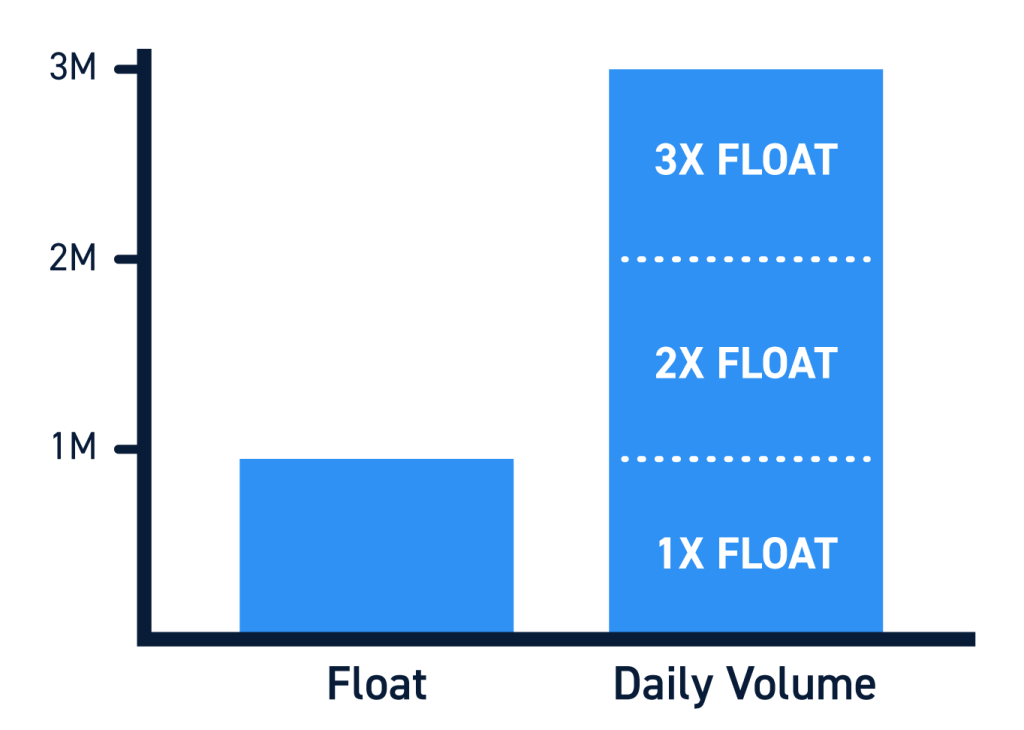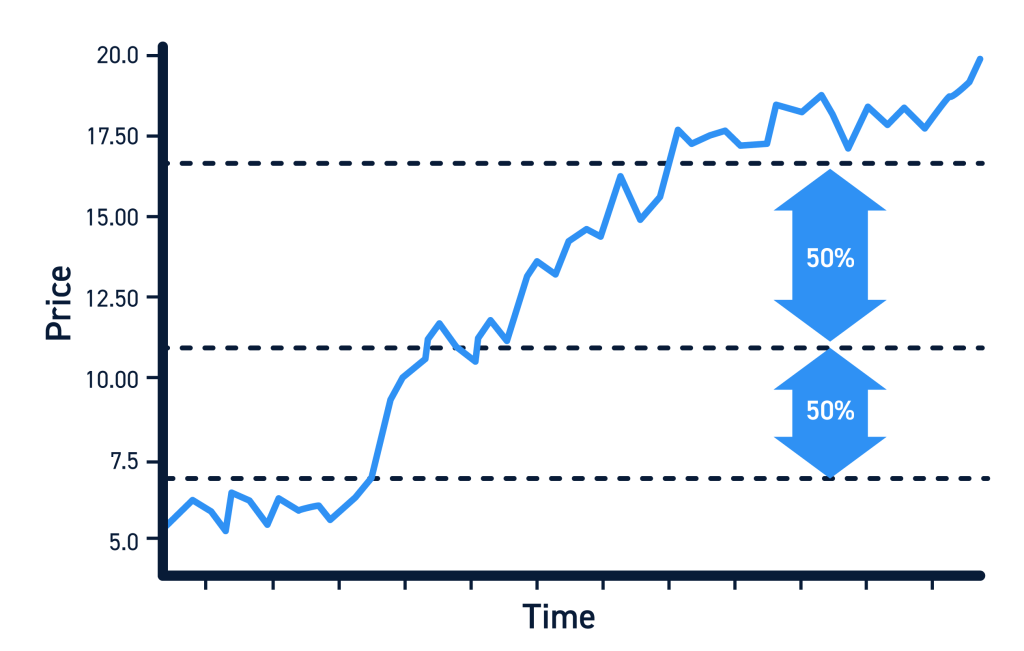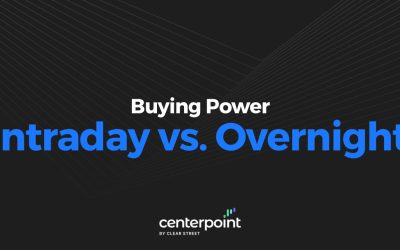Float rotation describes the number of times that a stock’s floating shares turn over in a single trading day. For day traders who focus on low-float stocks, float rotation is an important factor to watch when volatility spikes.
In this guide, we’ll explain what float rotation is and what it means for traders.
What is a Stock’s Float?
A stock’s floating shares, or float, is the number of shares that are available for trading on public markets. A stock’s float excludes shares that are restricted from trading and those that are closely held by insiders and financial institutions.
So, float is a better representation of the number of shares that are available to trade on any given day than a stock’s total outstanding shares.

Why Does a Stock’s Float Matter?
A stock’s float may be important because it can affect liquidity and volatility. Think of float as the supply of a stock’s shares in the market.
In general, stocks with higher float – that is, higher supply – tend to have higher liquidity and lower volatility. It’s typically easier to find shares to buy, so theoretically, there’s less run-up in prices due to a scarcity of supply.
Stocks with low float can be highly volatile. When demand spikes for a low-float stock, buyers may have a hard time finding shares to purchase. That means they’ll likely pay higher prices to outbid other buyers for available shares. When the price of a low float stock is climbing, this supply-demand imbalance may send the price suddenly soaring.

What is Float Rotation?
Float rotation is a measure of how many times a stock cycles through its entire supply of floating shares in a single trading day. In mathematical terms, a stock’s float rotation is equal to its trading volume divided by its float.
As an example, say a stock has 50 million shares outstanding. However, 20 million shares are held by the company’s executive team and pension funds. So the stock’s float is only 30 million shares.
On a typical day, that stock might see only 5-10 million shares traded and the float rotation is less than one. But on the day of a major news release, the company sees a trading volume of 120 million shares. That means that on that day, the stock has a float rotation of 4 (120 million divided by 30 million).

Why Does Float Rotation Matter?
When a stock has a float rotation greater than one, it means that all of its floating shares have turned over. In effect, the stock has traded to such a degree that it’s possible to have an entirely new set of shareholders. One group of shareholders may have started out the day owning the stock’s floating shares, and by the end of the day an entirely different group of shareholders owns the stock’s floating shares.
Importantly, a stock’s float rotation can be much higher than one in certain cases. If a stock has a float rotation of 10, that means that its shares turned over 10 times during a single day of trading.
Each new potential set of shareholders brings a psychological “reset” of sorts for the stock. For example, say shareholders that started the day owning the stock see it go from $5 to $10. The next set of shareholders (when the float rotation reaches one) entered at an average of around $10, so their price target is now higher and the upward momentum could force potential short sellers to cover their positions and increase the upward swing.
This cycle of bullish traders buying into a stock and short sellers covering can repeat itself multiple times during a day, enabling a low float stock to push much higher than expected from a modest catalyst.
For bullish traders, stocks with float rotation above one may offer an opportunity to pile in and make a quick profit. For bearish traders, it’s important to be very cautious trading stocks with high float rotation. It’s easy to get trapped, especially if bulls remain in control of the majority of shares after each new float rotation.

Conclusion
Float rotation describes the number of times that a stock’s floating shares turn over in a single trading day. It is mainly relevant for highly volatile low-float stocks, which can experience multiple float rotations following a bullish catalyst.






